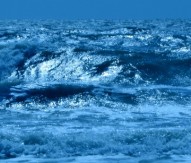
Mercury increases over pre-industrial levels
According to the results of a new study part-funded by the European Research Council, which provides the first direct calculation of mercury in the global ocean from pollution, there is three times more mercury in upper ocean since the Industrial Revolution.
The new paper, by a group that includes researchers from the Woods Hole Oceanographic Institution (WHOI) and Wright State University, USA, Observatoire Midi-Pyréneés, France, and the Royal Netherlands Institute for Sea Research, is based on data obtained from 12 sampling cruises over the past eight years and also provides a look at the global distribution of mercury in the marine environment.
Estimates of ‘bioavailable’ mercury—forms of the element that can be taken up by animals and humans—play an important role in everything from drafting an international treaty designed to protect humans and the environment from mercury emissions, to establishing public policies behind warnings about seafood consumption.
By determining the ratio of phosphate to mercury in water deeper than 1,000 meters (3,300 feet) that has not been in contact with Earth’s atmosphere since the Industrial Revolution, the group was able to estimate mercury in the ocean that originated from natural sources such as the breakdown, or ‘weathering,’ of rocks on land.
“It would seem that, if we want to regulate the mercury emissions into the environment and in the food we eat, then we should first know how much is there and how much human activity is adding every year,” said WHOI marine chemist Carl Lamborg, who led the study. “At the moment, however, there is no way to look at a water sample and tell the difference between mercury that came from pollution and mercury that came from natural sources. Now we have a way to at least separate the bulk contributions of natural and human sources over time.”
Analysis of their results showed rough agreement with the models used previously—that the ocean contains about 60,000 to 80,000 tonnes of pollution mercury. They also found that ocean waters shallower than about 100m have tripled in mercury concentration since the Industrial Revolution and that the ocean as a whole has shown an increase of roughly 10% over pre-industrial mercury levels.
The research has been published in the journal Nature.




